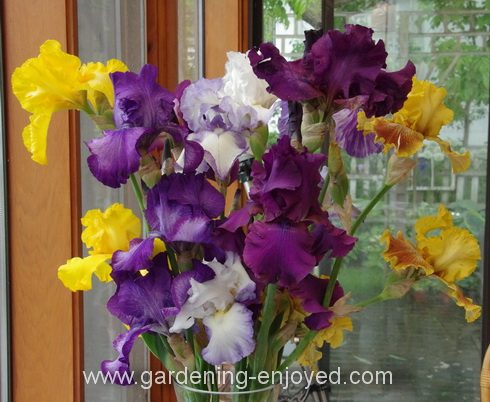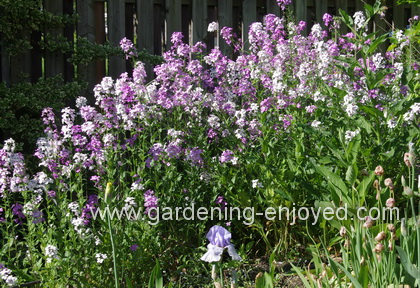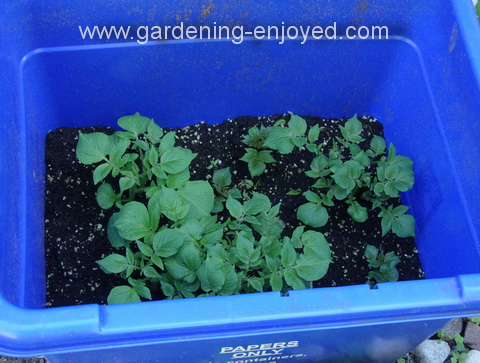| Back to Back Issues Page |
 |
|
Dallying In The Dirt, Issue #342 - Asparagus beetles are pretty but unwelcome visitors June 14, 2019 |
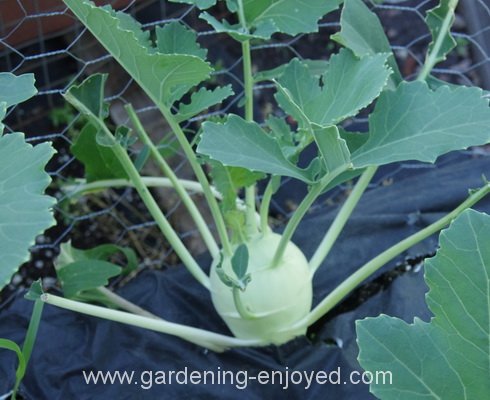
This delightful little Kohl Rabi will grace our dinner table tonight. It has been an uphill battle to produce these this year. They were one of the first things planted and were not protected from the rapacious rabbits until they were mowed down, letting me know, that even in the elevated Earthboxes they were not safe. You can see a bit of the chicken wire enclosures in the background. We have made a fitted enclosure for each of the boxes adding yet another chore in the ongoing battle to keep some of our vegetables for ourselves. They did regrow sufficient leaves to allow the delicious little bulb to develop at the base of the plant. Sliced and coated with a bit of breadcrumb and grated Parmesan they will spend a few minutes in the frying pan before pampering our palate.
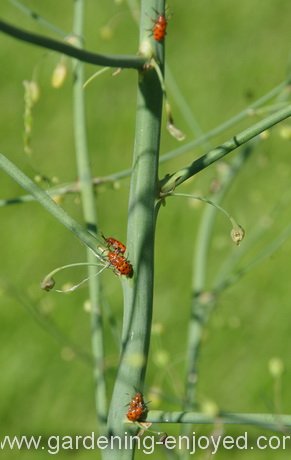 Beauty can be deceiving. These little creatures with the bright orange background and the attractive black dots seem to be quite pretty. The only real advantage to this lovely coloration is, it makes them easy to spot and attack. Asparagus Beetles come in two varieties Crioceris duodecimpunctata is the unpronounceable name for this Spotted Asparagus Beetle which will also have a taste for your Cucumbers if there’s not enough Asparagus. The Common Asparagus Beetle Crioceris asparagi is darker in colour with a red striped pattern and he is the much more voracious consumer of Asparagus. Spraying them with insecticidal soap can be effective as can hand picking. Just hold a can of soapy water underneath and knock them into it. They can fly and will do so if given the chance. Apparently approaching them from above is the most successful method. They can produce several generations in a season and they
pupate and emerge underground and that makes them susceptible to attack from some species of beneficial nematodes. Their larva can strip an Asparagus fern clean in a few days, leaving it quite brown and dead. Gardening, a never ending contest between we gardeners and Mother Nature's little friends.
Beauty can be deceiving. These little creatures with the bright orange background and the attractive black dots seem to be quite pretty. The only real advantage to this lovely coloration is, it makes them easy to spot and attack. Asparagus Beetles come in two varieties Crioceris duodecimpunctata is the unpronounceable name for this Spotted Asparagus Beetle which will also have a taste for your Cucumbers if there’s not enough Asparagus. The Common Asparagus Beetle Crioceris asparagi is darker in colour with a red striped pattern and he is the much more voracious consumer of Asparagus. Spraying them with insecticidal soap can be effective as can hand picking. Just hold a can of soapy water underneath and knock them into it. They can fly and will do so if given the chance. Apparently approaching them from above is the most successful method. They can produce several generations in a season and they
pupate and emerge underground and that makes them susceptible to attack from some species of beneficial nematodes. Their larva can strip an Asparagus fern clean in a few days, leaving it quite brown and dead. Gardening, a never ending contest between we gardeners and Mother Nature's little friends.Now it’s time to answer a few of my reader’s questions. To ask a question just “reply” to this ezine. Don’t forget to check the front page of the Website for frequent short ideas for current gardening activities. Arlene Asks? Was wondering if you should use Epsom salts on Hostas and Ferns? Dry or liquid? |
| Back to Back Issues Page |
